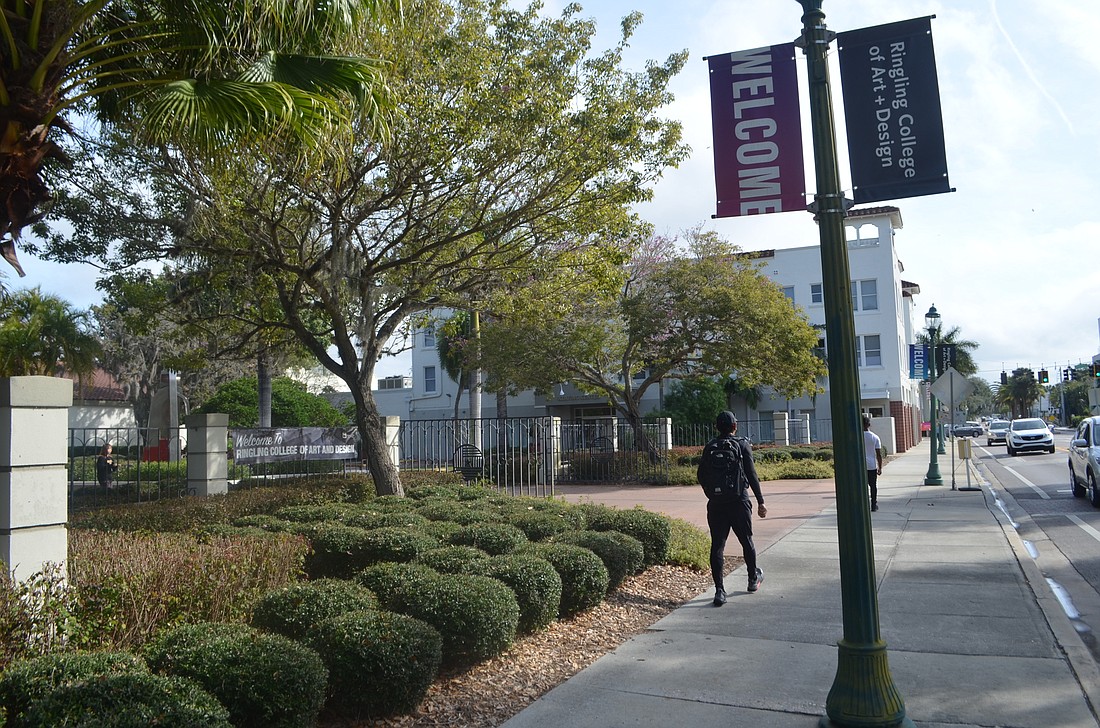- April 25, 2024
-
-
Loading

Loading

More than a decade after the city established the Ringling Overlay District, a special set of building regulations governing the campus of Ringling College of Art and Design, the school’s ambitions have outgrown the boundaries defined in 2007.
On Jan. 21, representatives from Ringling College appeared in front of the City Commission to request a zoning text amendment revising the overlay district. The commission unanimously approved the proposal, which expands the footprint of the district north to Guilford Lane and Patterson Drive.
Beyond the expanded boundaries, the revisions to the overlay district include some more technical changes. That includes adopting a comprehensive stormwater management policy and adding screening requirements for parking garages, which the school intends to build in its long-range campus plan.
The regulations in the overlay district aren’t the only thing Ringling College has refreshed. Last year, the school’s board of directors approved an update to the college’s master plan, revising goals related to campus layout and majors offered.
“The original plan we developed in 2011 reflected the best thinking at that time,” said Tracy Wagner, Ringling’s vice president for finance and administration. “Trees grow. Student preferences change. Academic programing changes as well.”
The school is already in the midst of a period of growth. Enrollment has increased from less than 1,400 in 2014 to 1,660 as of fall 2019. New buildings, including the Alfred R. Goldstein Library, the Ringling Studios soundstage complex and the Richard and Barbara Basch Visual Arts Center, dot the campus.
But Ringling isn’t content staying where it is. The school found more students are interested in living on campus now than they were in 2011, so it’s advancing plans to build a new residence hall on Greensboro Lane. A new dining hall is planned east of Old Bradenton Road. Wagner said the school intends to construct a “signature building,” including primarily academic facilities but also some gallery space, at the southeast corner of U.S. 41 and Dr. Martin Luther King Jr. Way.
As Ringling has planned its growth, it’s trying to work with neighboring communities, both residential and commercial. In the past, residents in Newtown have expressed concern about Ringling encroaching into the neighborhood. Wagner said outside input led to a focus on expansion to the northwest.
The college met with neighborhood groups and individual property owners to discuss the school’s vision. Wagner said Ringling has been responsive to neighborhood input by moving the location of the planned dining hall in response to community feedback.
At the Jan. 21 meeting, Commissioner Shelli Freeland Eddie questioned how the school could address parking-related concerns she’s heard from neighbors.
“There is currently a big problem with parking, particularly on side streets within the residential areas,” Freeland Eddie said.
Wagner said the school is using different short-term strategies to address parking challenges. They include restricting first-year students from parking on campus, providing short-term rental cars and investigating the possibility of adding off-site parking.
Ringling’s master plan also attempts to guide the institution through challenges and opportunities it might not currently be aware of. Wagner indicated the school was interested in further expanding its student population and states a student body between 2,000 and 2,500 typically provides a stable base for a small private institution.
With more students on campus, more facilities to manage and more academic opportunities to offer, Ringling is trying to ensure it’s prepared for whatever the future holds.
“We want to have that careful growth we’re really able to support,” Wagner said.